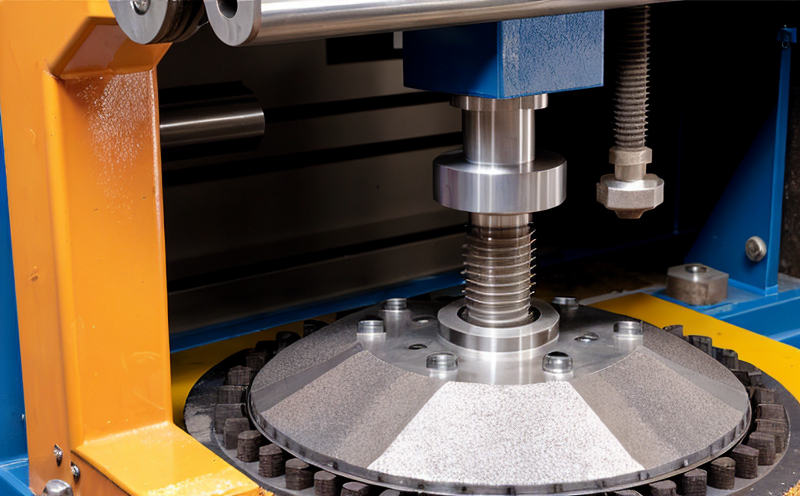ISO 13373-1 Vibration Condition Monitoring of Rotating Machinery
ISO 13373-1 is a pivotal standard that provides guidelines and procedures for vibration condition monitoring of rotating machinery. This service ensures the reliability, safety, and performance of critical equipment in various industrial sectors. Compliance with this international standard is essential for maintaining operational efficiency and preventing costly downtime due to unforeseen failures.
The process involves continuous or periodic measurement and analysis of vibrations emanating from rotating components such as motors, fans, pumps, compressors, and turbines. Vibration data is collected using accelerometers placed strategically on the equipment's casing. The data captured includes frequency, amplitude, phase angle, and other relevant parameters that can indicate potential issues within the machinery.
Vibration analysis helps in identifying various types of faults, including misalignment, unbalance, looseness, bearing defects, gear meshing problems, and structural resonance. By detecting these anomalies early, predictive maintenance strategies can be implemented to avoid catastrophic failures. This proactive approach not only extends the lifespan of equipment but also ensures compliance with stringent industry regulations.
The testing process begins by thoroughly preparing the machinery for measurement. This includes ensuring that the machine is running at its normal operating conditions and collecting baseline data under stable environmental parameters. Once this preparatory step is complete, continuous or periodic monitoring can commence, depending on the specific requirements of the client. The collected vibration data is then analyzed using advanced signal processing techniques to identify any deviations from established norms.
For rotating machinery, ISO 13373-1 emphasizes the importance of understanding the machine's operational characteristics and the expected behavior under normal conditions. This knowledge helps in setting appropriate thresholds for acceptable vibration levels. Any deviation from these thresholds can be flagged as a potential issue requiring further investigation or corrective action.
The service also involves providing detailed reports that include all raw data, analysis results, and recommendations for maintenance actions. These reports are invaluable tools for quality managers, compliance officers, R&D engineers, and procurement teams responsible for ensuring the reliability and safety of rotating machinery in their organizations.
- Continuous monitoring ensures real-time assessment of equipment health.
- Periodic checks provide a historical record of machine performance over time.
- Data analysis helps predict failures before they occur.
- Comprehensive reporting aids in informed decision-making and strategic planning.
Incorporating ISO 13373-1 into your maintenance protocols can significantly enhance the reliability and longevity of your rotating machinery. By adhering to this standard, you not only meet international best practices but also demonstrate a commitment to quality and safety that is recognized globally.
Eurolab Advantages
At Eurolab, we pride ourselves on delivering top-tier vibration condition monitoring services aligned with ISO 13373-1 standards. Our team of experienced engineers leverages cutting-edge technology and methodologies to ensure accurate and reliable results.
We offer a range of services tailored to meet the specific needs of our clients. From initial assessments to ongoing monitoring, we provide comprehensive solutions that support continuous improvement in equipment performance.
Our state-of-the-art facilities are equipped with the latest instrumentation, allowing us to conduct thorough analyses and deliver precise reports. Our commitment to quality is reflected in our stringent adherence to international standards, ensuring that all tests meet or exceed industry benchmarks.
The expertise of our personnel is a key differentiator. Our engineers have extensive experience in vibration analysis and can provide valuable insights into the health of your machinery. They are well-versed in interpreting complex data sets and offering practical recommendations for maintenance and operational strategies.
Client satisfaction is at the heart of everything we do. We maintain open lines of communication to ensure that our clients understand every aspect of the testing process, from preparation to analysis and reporting. This transparency fosters trust and confidence in our services.
Quality and Reliability Assurance
The quality and reliability assurance processes at Eurolab are designed to uphold the highest standards of precision and accuracy. We employ rigorous protocols that ensure every test conducted adheres strictly to ISO 13373-1 guidelines.
Our procedures begin with meticulous calibration and validation of all instrumentation used in vibration monitoring. This ensures that the data collected is both accurate and consistent, providing reliable insights into equipment performance.
The testing environment at Eurolab is controlled to replicate real-world operating conditions as closely as possible. This helps in obtaining more relevant data that reflects actual machine behavior. Our engineers use this data to make informed decisions about maintenance actions or operational adjustments.
Once the tests are completed, we perform a thorough validation of all results against established criteria and thresholds specified by ISO 13373-1. Any anomalies detected during testing are rigorously investigated to ensure they do not compromise the integrity of our reports.
The final step in our quality assurance process is the preparation of detailed reports that summarize the findings and recommendations for action. These reports are meticulously reviewed by our senior engineers, ensuring that all conclusions are sound and actionable. Our clients can trust these reports as authoritative documents that provide a clear path forward for maintaining optimal equipment performance.
International Acceptance and Recognition
The ISO 13373-1 standard has gained widespread acceptance across numerous industries, including HVAC, manufacturing, power generation, and transportation. It is recognized by regulatory bodies worldwide as a benchmark for vibration monitoring practices.
- ISO 13373-1 is widely used in Europe, North America, Asia, and other regions.
- The standard is endorsed by organizations such as the European Committee for Standardization (CEN) and the International Electrotechnical Commission (IEC).
- Vibration condition monitoring according to ISO 13373-1 is a prerequisite for compliance with various national standards, including those in the United States, Canada, and Australia.
Adopting this standard not only ensures that your testing practices are aligned with global best practices but also enhances your organization's reputation as a leader in quality assurance and reliability.





